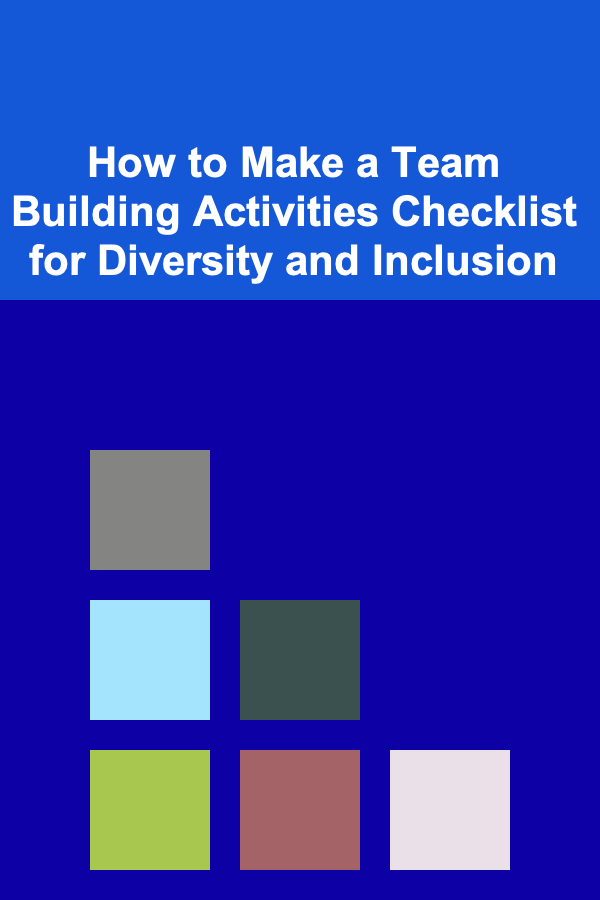
Achieving Mindfulness: A Step-by-Step Practice
ebook include PDF & Audio bundle (Micro Guide)
$12.99$10.99
Limited Time Offer! Order within the next:

Mindfulness is more than just a buzzword. It is a transformative practice that can help individuals navigate the challenges of daily life with a sense of clarity, presence, and peace. In its essence, mindfulness involves being fully present in the moment, paying attention to what is happening right now, without judgment or distraction. By cultivating mindfulness, we can improve our mental, emotional, and physical well-being.
This article is designed to be a comprehensive guide to achieving mindfulness. It will take you step-by-step through the practice, offering insights into how to develop and sustain a mindful life. Whether you are a beginner or someone who has practiced mindfulness before, this guide provides the tools to deepen your practice and integrate it into your everyday life.
What is Mindfulness?
Mindfulness is often defined as the practice of paying full attention to the present moment in a non-judgmental way. It involves observing thoughts, emotions, and sensations as they arise, without becoming attached to them or trying to control them. This type of awareness can be cultivated through practices such as meditation, breathing exercises, mindful walking, and even mindful eating.
The core of mindfulness is rooted in awareness and acceptance. Rather than resisting uncomfortable thoughts or emotions, mindfulness teaches you to notice them without judgment. Over time, this practice can help reduce stress, increase emotional resilience, improve focus, and foster a deeper connection with the world around you.
Key Elements of Mindfulness
- Awareness: Paying attention to the present moment, noticing what is happening without distraction.
- Non-judgment: Observing your thoughts and feelings without labeling them as "good" or "bad."
- Acceptance: Allowing experiences, thoughts, and emotions to come and go naturally, without trying to change them.
- Presence: Fully immersing yourself in the current moment, without regret for the past or anxiety about the future.
By training your mind to be mindful, you can develop a new relationship with your thoughts and emotions, one that is less reactive and more balanced.
Why Mindfulness Matters
The benefits of mindfulness are profound, impacting many aspects of life. Studies have shown that regular mindfulness practice can lead to improvements in both mental and physical health. Let's explore the key benefits of cultivating mindfulness:
1. Reduction of Stress and Anxiety
Mindfulness helps break the cycle of negative thinking and rumination, which can contribute to chronic stress and anxiety. By learning to be present with whatever you are experiencing, without judgment or the desire to escape, you can reduce the emotional reactivity that often fuels anxiety.
2. Improved Emotional Regulation
Mindfulness enhances emotional awareness and self-regulation. When we are mindful, we are less likely to be swept away by intense emotions like anger, fear, or sadness. Instead of reacting impulsively to our emotions, we can pause and choose how we respond in a calm and measured way.
3. Enhanced Focus and Concentration
When we practice mindfulness, we train our minds to focus on the present moment. This leads to improved concentration and the ability to sustain attention on tasks, making us more productive and efficient in our daily lives.
4. Better Physical Health
Mindfulness has been linked to improved immune function, lower blood pressure, and better sleep quality. The practice helps reduce the physiological effects of stress on the body, leading to an overall improvement in physical health.
5. Increased Compassion and Empathy
By becoming more aware of our own thoughts and feelings, we can develop greater empathy for others. Mindfulness fosters compassion and a deeper sense of connection to others, improving relationships both personally and professionally.
A Step-by-Step Guide to Practicing Mindfulness
Now that we understand what mindfulness is and why it is important, let's explore how to practice it. Developing mindfulness is a gradual process that requires patience, consistency, and intention. Below is a step-by-step guide to incorporating mindfulness into your daily life.
Step 1: Create a Dedicated Space for Practice
While mindfulness can be practiced anywhere, having a dedicated space for your practice can help set the tone and provide consistency. This space should be quiet, comfortable, and free from distractions. It doesn't need to be large; even a small corner with a cushion or chair can work. The key is to create an environment that invites calmness and focus.
Step 2: Focus on Your Breath
One of the most fundamental mindfulness practices is focusing on the breath. Your breath is always with you and serves as an anchor to the present moment. To begin, sit comfortably with your spine straight and your feet on the floor (or cross-legged on the ground if sitting on a cushion). Close your eyes and bring your awareness to your breath.
Simple Breathing Exercise:
- Inhale deeply through your nose, counting to four.
- Exhale slowly through your mouth, counting to four.
- Continue to breathe in this slow and steady way for 5-10 minutes.
- As you breathe, notice any thoughts or distractions that arise. Simply acknowledge them and return your focus to your breath.
This simple exercise helps cultivate the present-moment awareness that is central to mindfulness practice. Over time, as you become more comfortable, you can extend the duration of your breathwork sessions.
Step 3: Practice Body Scan Meditation
The body scan is another mindfulness technique that helps connect you with your body and release tension. It involves mentally scanning your body from head to toe, bringing awareness to each part without judgment. This practice can help increase your awareness of physical sensations and promote relaxation.
Body Scan Meditation Steps:
- Begin by lying down or sitting comfortably with your eyes closed.
- Start by bringing awareness to the top of your head. Notice any sensations or tightness in your scalp, forehead, and face.
- Slowly move your attention down your body, part by part---neck, shoulders, arms, chest, abdomen, hips, legs, and feet. As you focus on each area, simply observe any sensations (warmth, tension, discomfort, etc.) without trying to change them.
- If your mind wanders, gently bring it back to the body part you were focusing on.
The body scan practice can be done daily to help cultivate a deeper awareness of physical sensations, promote relaxation, and reduce stress.
Step 4: Mindful Walking
Mindful walking is a practice where you bring awareness to each step as you walk, focusing on the movement and sensations of your body in motion. This practice can be done indoors or outdoors and is an excellent way to integrate mindfulness into your daily routine.
Steps for Mindful Walking:
- Find a quiet place where you can walk without distractions. A park or a quiet path is ideal.
- Stand with your feet shoulder-width apart and bring your attention to your body.
- As you take a step, notice how your foot lifts off the ground, moves through the air, and then lands softly.
- Pay attention to the sensation in your feet as they make contact with the ground. Notice the rhythm of your steps and how your body moves.
- If your mind begins to wander, gently bring your focus back to your steps.
Mindful walking helps you practice present-moment awareness while engaging in physical activity. It can be a great alternative when you are feeling too restless for seated meditation.
Step 5: Practice Mindful Eating
Mindful eating involves paying full attention to the experience of eating, from the textures and flavors of the food to the sensations in your body. This practice can help you develop a healthier relationship with food and increase your enjoyment of meals.
Steps for Mindful Eating:
- Before you eat, take a moment to appreciate the food in front of you. Notice the colors, smells, and textures.
- As you take your first bite, chew slowly and savor the taste. Pay attention to the sensation of the food in your mouth.
- As you continue eating, try to stay present with the experience, avoiding distractions like television or phones.
- Notice how your body feels as you eat---are you hungry, full, or satisfied? Stop eating when you feel content, rather than when you are stuffed.
Mindful eating encourages you to slow down and appreciate food, fostering a greater connection to the process of eating and nourishing your body.
Step 6: Incorporate Mindfulness into Daily Activities
Mindfulness is not limited to formal practice like meditation. You can bring mindfulness into almost any activity. Whether you are washing dishes, driving, or working, try to approach each task with full awareness.
Tips for Integrating Mindfulness into Everyday Life:
- Mindful Listening: When having a conversation, focus on really listening to the other person without interrupting or thinking about what you will say next.
- Mindful Work: Approach your tasks with full attention, focusing on one task at a time, and noticing how your body feels as you work.
- Mindful Technology Use: Practice mindfulness when using your phone or computer by focusing on the task at hand and being intentional about your screen time.
By bringing mindfulness into all aspects of life, you create a continuous thread of awareness that helps you stay grounded and present.
Overcoming Challenges in Mindfulness Practice
Mindfulness is a skill that takes time to develop. As you begin your journey, you may encounter some challenges:
- Distractions: It's common for the mind to wander during mindfulness practice. When this happens, gently bring your attention back to the present moment without self-criticism.
- Restlessness: If you feel restless or fidgety, try adjusting your posture or doing a body scan to release tension.
- Expectations: Let go of any expectations for how your practice should unfold. Mindfulness is not about achieving a specific result but about being present with whatever arises.
Remember, the goal of mindfulness is not to control your thoughts or emotions but to observe and accept them as they are.
Conclusion
Achieving mindfulness is a lifelong practice that requires patience, consistency, and dedication. By following these step-by-step techniques, you can gradually cultivate a greater sense of awareness, presence, and acceptance in your life. Mindfulness offers a powerful tool for reducing stress, improving focus, and enhancing overall well-being. With time, mindfulness can become an integral part of your daily routine, leading to a more peaceful and fulfilling life.

How to Build Relationships with Sponsors Beyond the Event
Read More
How to Make a Team Building Activities Checklist for Diversity and Inclusion
Read More
How to Use Online Platforms to Start a Global Side Hustle
Read More
What Creative Storage Solutions Work Best for Small Spaces?
Read More
How to Become a Space Engineer: A Comprehensive Guide
Read More
How to Deal With Cash Register Errors as a Cashier
Read MoreOther Products

How to Build Relationships with Sponsors Beyond the Event
Read More
How to Make a Team Building Activities Checklist for Diversity and Inclusion
Read More
How to Use Online Platforms to Start a Global Side Hustle
Read More
What Creative Storage Solutions Work Best for Small Spaces?
Read More
How to Become a Space Engineer: A Comprehensive Guide
Read More